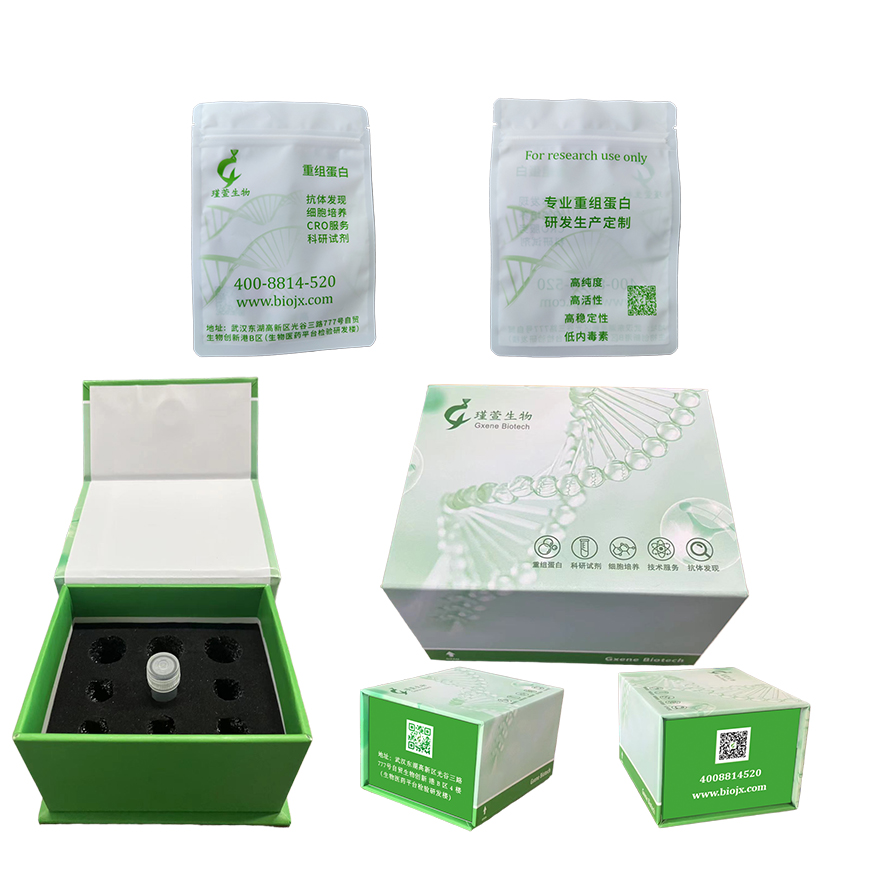种属
Human
表达宿主
HEK293 cells
描述
Recombinant Human Beta-2-microglobulin/B2M Protein is produced by HEK293 expression system. The target protein is expressed with sequence (Ile21-Met119) of human B2M/Beta-2-microglobulin (Accession #NP_004039.1) fused with a 6×His tag at the C-terminus.
标签
C-His
纯度
> 97% by SDS-PAGE.
内毒素
< 0.1 EU/μg of the protein by LAL method.
生物活性
Measured by its binding ability in a functional ELISA. Immobilized Recombinant Human B2M at 2 μg/mL (100 μL/well) can bind Recombinant Human CD8 alpha with a linear range of 31.25-341 ng/mL.
制剂
Lyophilized from a 0.22 μm filtered solution of PBS, pH 7.4.Contact us for customized product form or formulation.
储存
Store the lyophilized protein at -20°C to -80 °C for long term.
After reconstitution, the protein solution is stable at -20 °C for 3 months, at 2-8 °C for up to 1 week.
After reconstitution, the protein solution is stable at -20 °C for 3 months, at 2-8 °C for up to 1 week.
复溶
Centrifuge the vial before opening. Reconstitute to a concentration of 0.1-0.5 mg/mL in sterile distilled water. Avoid votex or vigorously pipetting the protein. For long term storage, it is recommended to add a carrier protein or stablizer (e.g. 0.1% BSA, 5% HSA, 10% FBS or 5% Trehalose), and aliquot the reconstituted protein solution to minimize free-thaw cycles.
研究方向
B2M(或 Beta-2-微球蛋白)是 I 类主要组织相容性复合体 (MHC) 的重要组成部分,在向免疫系统呈递肽抗原方面发挥着核心作用。值得注意的是,外源应用的结核分枝杆菌 EsxA 或 EsxA-EsxB 会结合 B2M 并减少其向细胞表面的输出,可能导致 I 类抗原呈递缺陷。B2M 以异二聚体形式存在,由 α 链和 β 链组成,后者作为主要组织相容性复合物 I 类分子的 β 链。在长期血液透析患者的组织中观察到了 B2M 聚合物。B2M 以其分离形式与结核分枝杆菌 EsxA 和 EsxA-EsxB 复合物相互作用,形成可在宿主内质网中检测到的三联复合物。B2M-EsxA 复合物的稳定性可在较宽的 pH 范围内以及高盐浓度的情况下保持。此外,B2M 与 HLA-E、HLA-G 和 HLA-F 以及自身肽或外源肽形成异三聚体,有助于主要组织相容性复合物的多种功能。此外,B2M 与 MR1 形成异源三聚体复合物,在与代谢抗原相关的抗原呈递中发挥作用。
背景信息
This protein is a serum protein found in association with the major histocompatibility complex (MHC) class I heavy chain on the surface of nearly all nucleated cells. The protein has a predominantly beta-pleated sheet structure that can form amyloid fibrils in some pathological conditions. The encoded antimicrobial protein displays antibacterial activity in amniotic fluid. A mutation in this gene has been shown to result in hypercatabolic hypoproteinemia.

